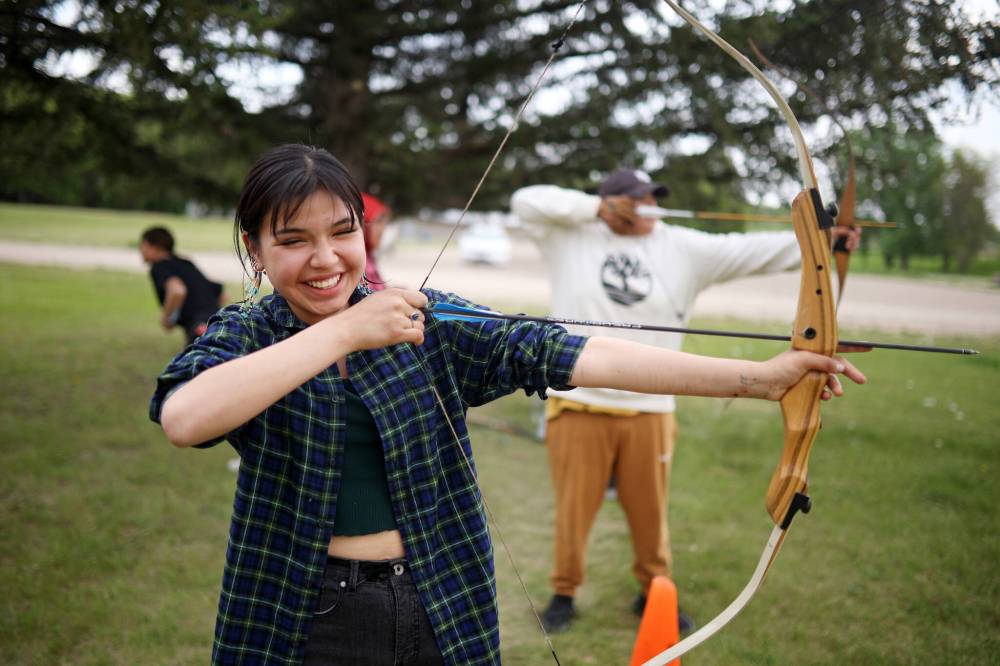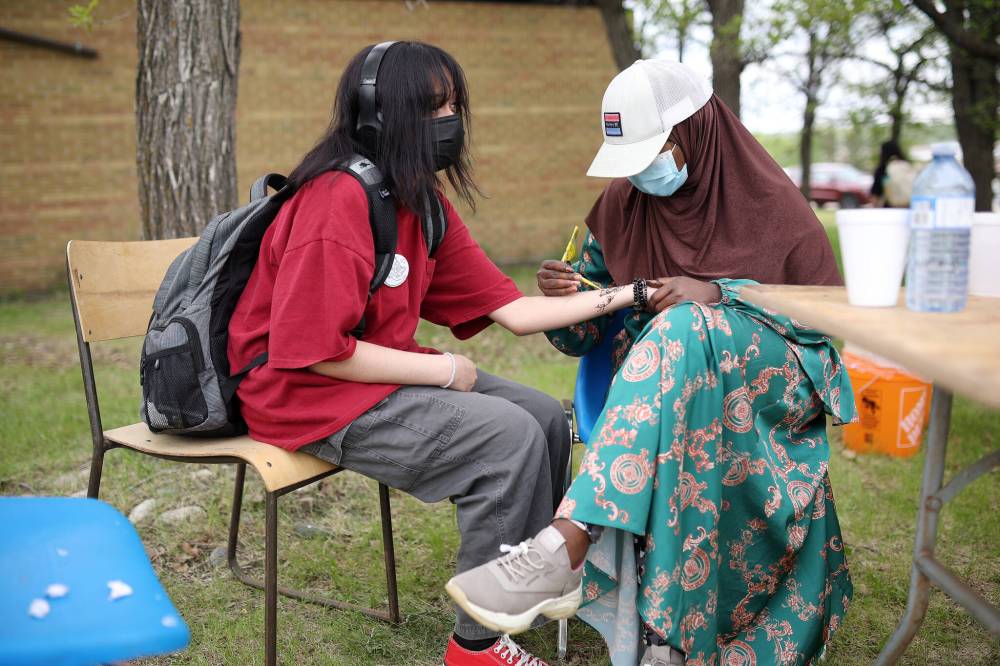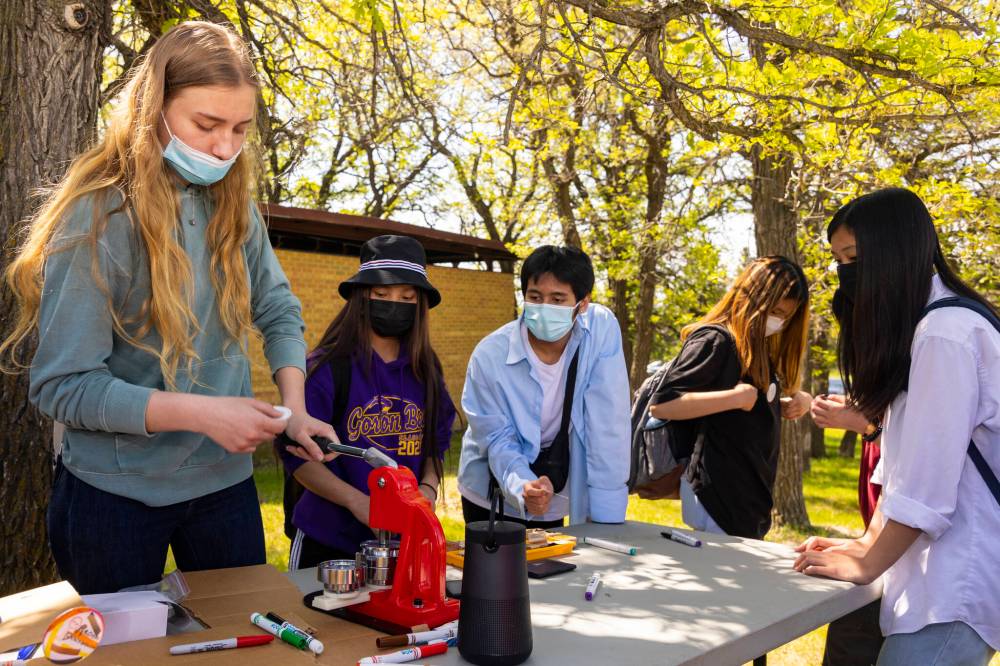Culture camp connecting Manitoba youth
Advertisement
Read this article for free:
or
Already have an account? Log in here »
We need your support!
Local journalism needs your support!
As we navigate through unprecedented times, our journalists are working harder than ever to bring you the latest local updates to keep you safe and informed.
Now, more than ever, we need your support.
Starting at $15.99 plus taxes every four weeks you can access your Brandon Sun online and full access to all content as it appears on our website.
Subscribe Nowor call circulation directly at (204) 727-0527.
Your pledge helps to ensure we provide the news that matters most to your community!
To continue reading, please subscribe:
Add Brandon Sun access to your Free Press subscription for only an additional
$1 for the first 4 weeks*
*Your next subscription payment will increase by $1.00 and you will be charged $20.00 plus GST for four weeks. After four weeks, your payment will increase to $24.00 plus GST every four weeks.
Read unlimited articles for free today:
or
Already have an account? Log in here »
Hey there, time traveller!
This article was published 10/06/2022 (1269 days ago), so information in it may no longer be current.
Sioux Valley Dakota Nation culture camp brought together multiple generations and newcomers in a celebration of Indigenous cultures, traditions and knowledge over three days of activities.
Sioux Valley High School hosted the culture camp at Grand Valley Campground from Wednesday to Friday.
During the festivities, organizers “take the classroom to the outdoors” and host different activities that promote Dakota language, culture and teachings, said principal Kevin Nabess.

Elders, guests and local knowledge keepers are invited to participate and pass on their teachings to the young people in attendance.
“It’s three-generational teachings: we have the kids learning from the middle generation and we have the elders observing the middle generation teaching the youth,” Nabess said. “It’s a beautiful event. It’s nice to share with everyone.”
For the first time at the culture camp, newcomer students from the Winnipeg area were invited to participate and learn more about Dakota culture through the Be That Leader program, Nabess said. The school connected with the organization after being invited to attend a Jets game in Winnipeg over the winter.
“For the Dakotas here, we’ve been specifically teaching the traditions and values here and we wanted to share that with them as kind of a way to break racial barriers,” Nabess said. “We’re building bridges.”
The collaboration served as an opportunity to break down racism through a cultural exchange so newcomers can learn and understand Dakota culture, while Sioux Valley students learn and understand the experiences of newcomers in Manitoba.
Shakila Atayee works with the Aurora Family Therapy Centre in Winnipeg and runs the Be That Leader program for newcomer youth in the community. The program includes students from four Winnipeg High Schools and saw 29 students from the program making the trek to Grand Valley Thursday.
“We are trying to help them integrate into the Canadian society and one of our goals is to collaborate with the Indigenous community,” Atayee said. “In Winnipeg, they are more newcomers and the Indigenous community, both of them are living in a low-income part of the city and struggling or competing for the similar services.”
Through the Be That Leader program, youth can learn about the Indigenous cultures firsthand from Indigenous people by attending events like Sioux Valley culture camp, Atayee said.
“I think having both youths to learn from each other and their experiences, play with each other, will create a better society for them and build a bridge of friendship,” Atayee said. “They can share their resources in a better way together.”
Sioux Valley elders Eleanor Elk and Margaret Roscelli described the culture camp as an important opportunity to connect, celebrate and learn about Dakota culture.

“Today is a very happy occasion, especially for our younger people. They are learning a lot of things that should have been taught at home, but it’s OK because a lot of us didn’t grow up knowing these things because of the colonization that happened,” Roscelli said. “A lot of people had forgotten their ways.”
The elders always look forward to the culture camp, Roscelli said, because it serves as an opportunity to interact with community youth and spend time together learning teachings.
The activities they engage in are critical because many youth never had the chance to practise an art like quill work, she said, since the passing of knowledge was disrupted by intergenerational trauma and colonial assimilation tactics. It is incredible being able to help students reconnect with their familial legacies and Dakota culture, she said.
“We are in our traditional home area. You cannot remove us,” Roscelli said. “This is a time to renew and teach the young ones and spend time together as elders.”
Culture camp also serves as an opportunity for elders to sit together and talk about their culture and the overall well-being of the community.
Many elders have been able to maintain the Dakota language and speak it fluently to this day, Roscelli said, even though institutions like residential schools tried to snuff it out.
“Ever since we were born we spoke Dakota, so they couldn’t take that away from us,” Roscelli said. “Hopefully we are influencing the younger people to learn. To take back our history and our language and to be proud of who they are.”
They work with youth in the community to keep the language alive and help them become fluent Dakota speakers.
These ties to culture are essential as it also aids in the mental health of Sioux Valley young people.
While the nation is in the process of healing, there is still work to do, Roscelli said, and the elder believes connecting to culture remains essential.

Elders serve as the grandparents in the community, Elk added, and can provide love and guidance to youth.
Kookums (grandmothers) always held an important role in the community, providing kindness, love and stern guidance when needed, Elk said. She wants youth to feel this same comfort from her, Roscelli and other Sioux Valley elders.
These practices are part of overcoming intergenerational trauma and can apply teachings in a way that helps heal the community. There is a need to ensure youth feel comfortable coming for a hug and seeking advice and support from elders as their kookums.
“If we can continue to work at … people will once again live in harmony and do the things in the most respectful, loving way, especially towards our children, our grandchildren,” Elk said. “That love is always there and this is something we need to keep up with.”
» ckemp@brandonsun.com
» Twitter: @The_ChelseaKemp
